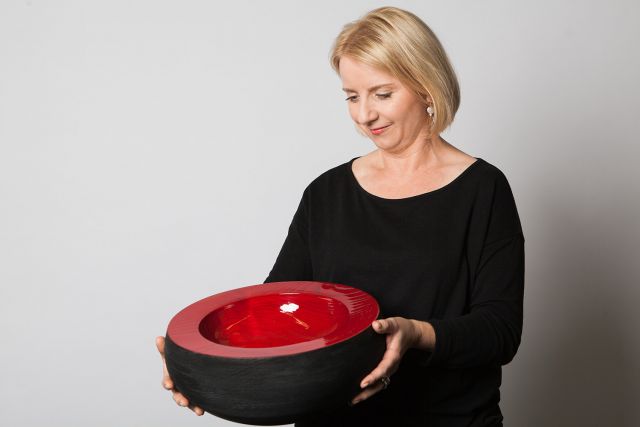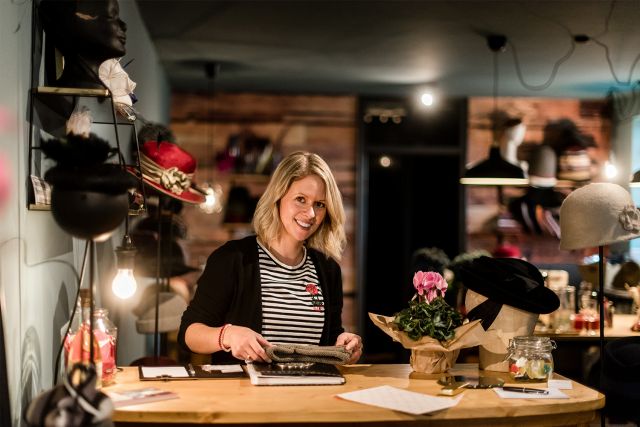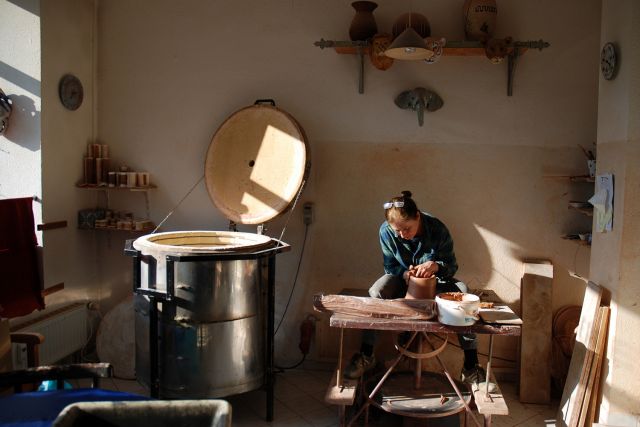This 1980s office chair is a replica of an original Gründerzeit chair. It is semicircular and made of mahogany wood. As for the seat, it was recaned to coordinate with the original six-way standard pattern of the backrest.
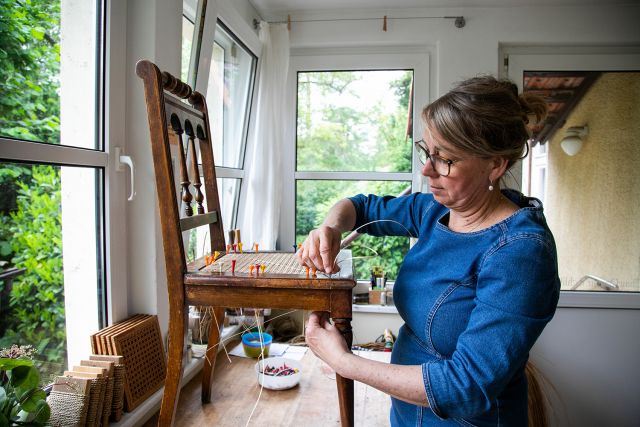
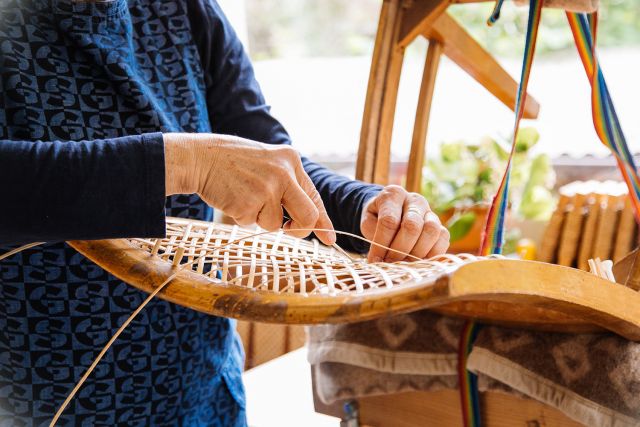
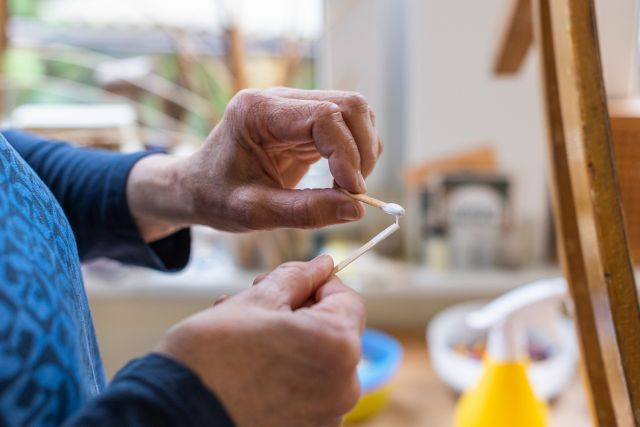
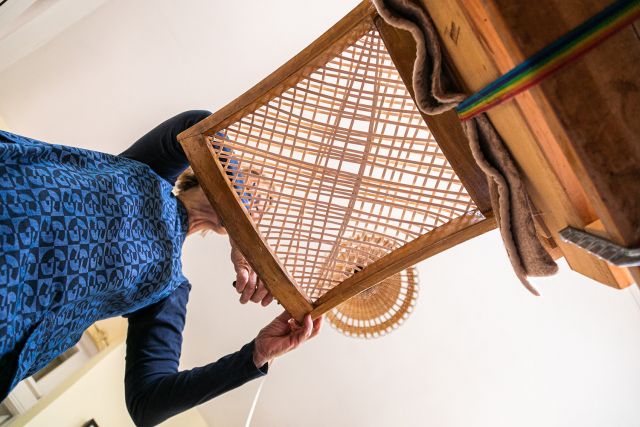
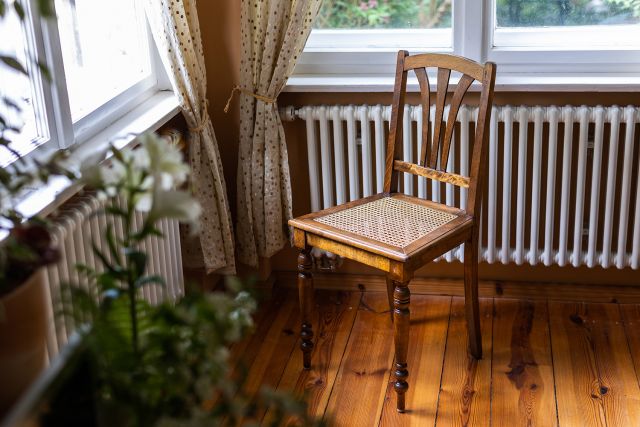
Silke Schlittermann
- ChairRepair Schlittermann
- Chair caner
- Berlin, Germany
- Master Artisan
- Recommended by Zentralverband des Deutschen Handwerks
By appointment only
+49 1743921209
Empathically repairing chairs
- • Silke likes to work when it rains at the open window
- • Chair caning has allowed her to combine family life with her craft
- • She feels chosen by her craft
As a child, Silke Schlittermann used carpentry to compensate for the goods she missed growing up in the GDR. She was enthusiastically supported in this by her father, an engineer. Apprenticeships for carpenters were extremely scarce in East Germany at that time. As a result, Silke began her career as a metalworker before becoming a carpenter after the reunification. Chair caning was introduced to her by pure accident. Upon arriving in England for a one-year carpentry training programme, she discovered the company that had hired her was bankrupt. Her only option was to go home or to find something new. Chair caning was the only other craft workshop available in the small English town where she found herself. "With cake, I persuaded the owner to hire me," she remembers. That year, she not only became a lifelong close friend with the owner, but also learned a new craft that enabled her to realise her dream of being a craftswoman with a large family.
Read the full interviewWorks
Photo: ©Sabine Engels

Photo: ©Sabine Engels
Both of these very simple children's chairs had broken wooden seats. Beech wood was used to make them. A traditional Danish cord design was adapted on them to obtain a perfect harmony between the two materials

Photo: ©Sabine Engels
This simple art nouveau kitchen chair is made from middle brown beech wood. The seat was remade with a classic six-way standard pattern made from natural cane.

Photo: ©Sabine Engels
This simple 1960s dining chair is constructed from middle brown beech wood. In a four-step quick pattern, Silke Schlittermann recaned it with natural cane.

Photo: ©Sabine Engels
Light pine wood is used to make these children's chairs. Silke Schlittermann has made a DIY kit for people to build these chairs themselves at home. Premade wooden parts, seagrass, and instructions are included in the package.





